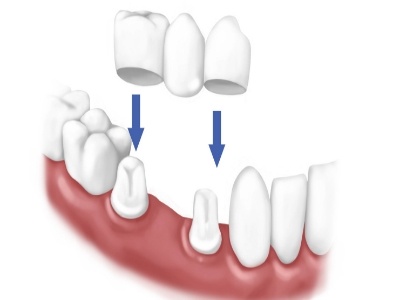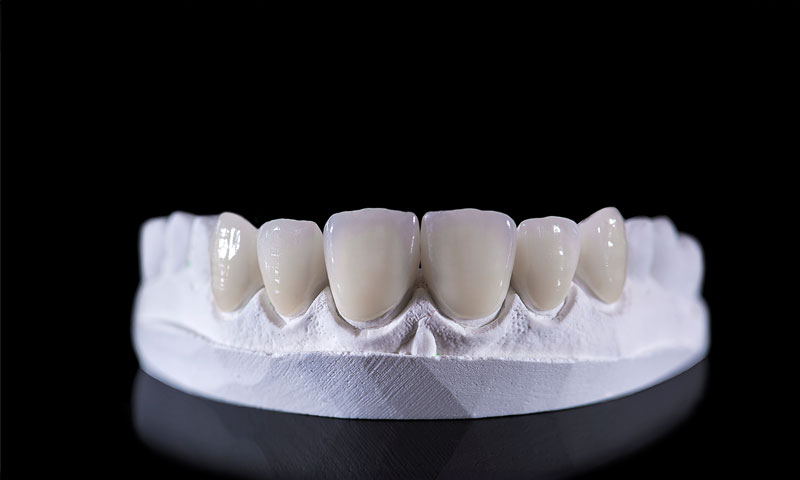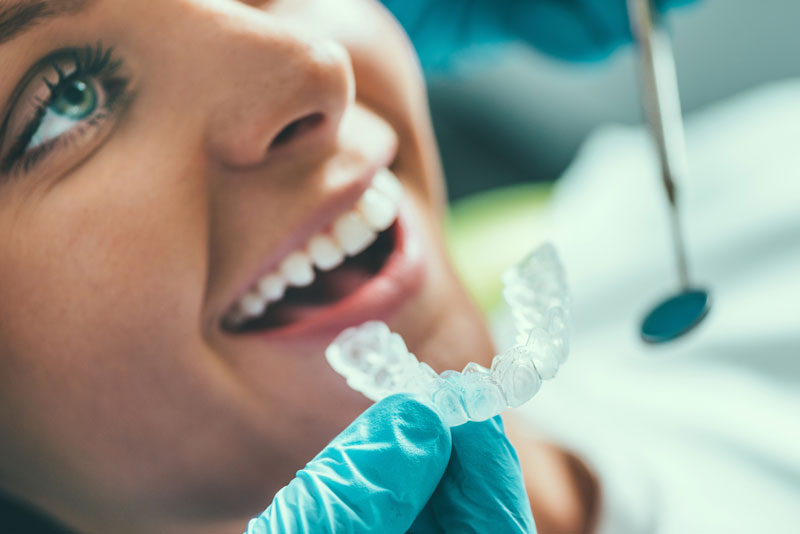When prepared and installed properly, a dental crown is one of the most attractive and durable ways to
improve your smile. Simply by affixing a crown onto your damaged or disfigured tooth, you can have perfectly shaped, white teeth that will last you a lifetime. But not all dental crowns are created equal—different materials, different doctors, and different procedures leads to different prices… and different outcomes. Here are some of the most common materials used to make dental crowns, and the pros and cons of each:
Porcelain Fused To Metal (PFM) Crown
PFM crowns are pretty much exactly what they sound like; a metal base with a porcelain cap affixed, or “fused,” on top of it. PFM has been the gold standard among dentists for a long time due to its strength and durability.
However, it is not the most aesthetically attractive option, as you can usually see the metal through the low opacity of the porcelain cap. Because it is designed to look like a real tooth, it is slightly translucent. For these two reasons, PFM crowns are especially good choices for molars, which chew the most and are hidden away in the back of the mouth.
PFM crowns have the additional drawback of requiring a certain amount of tooth removal as part of the installation process. Metal can also cause allergic reactions in some patients.
Zirconia Crown
Zirconia, or zirconium oxide, is an advantageous crown base for a number of reasons. As a crystalline oxide made from the metal zirconium, it offers substantial strength benefits compared to porcelain or metal, and looks much better, too. Zirconia can be tinted to match the hue and transparency of any tooth in your mouth. It is also less reactive than conventional metal crowns, and doesn’t require as much base tooth removal to install. While arguably the most expensive option on the list (though not by much), it is a great combination of aesthetics and pragmatics.
Composite/Ceramic (Metal-Free) Crown
Composite ceramic crowns are the most aesthetically pleasing and convenient way option available. Although they are not necessarily are strong as PFM or Zirconia, composite ceramic crowns typically last well upwards of ten years if they are well-made. And where the above crowns have to be made in a lab before they can be installed in the dental office, CEREC technology can produce composite ceramic crowns in a single appointment. This not only reduces the cost of the crown, it also gives dentists more control over its quality and appearance. These crowns can also be installed temporarily while another crown is being made, to offer immediate relief.



















